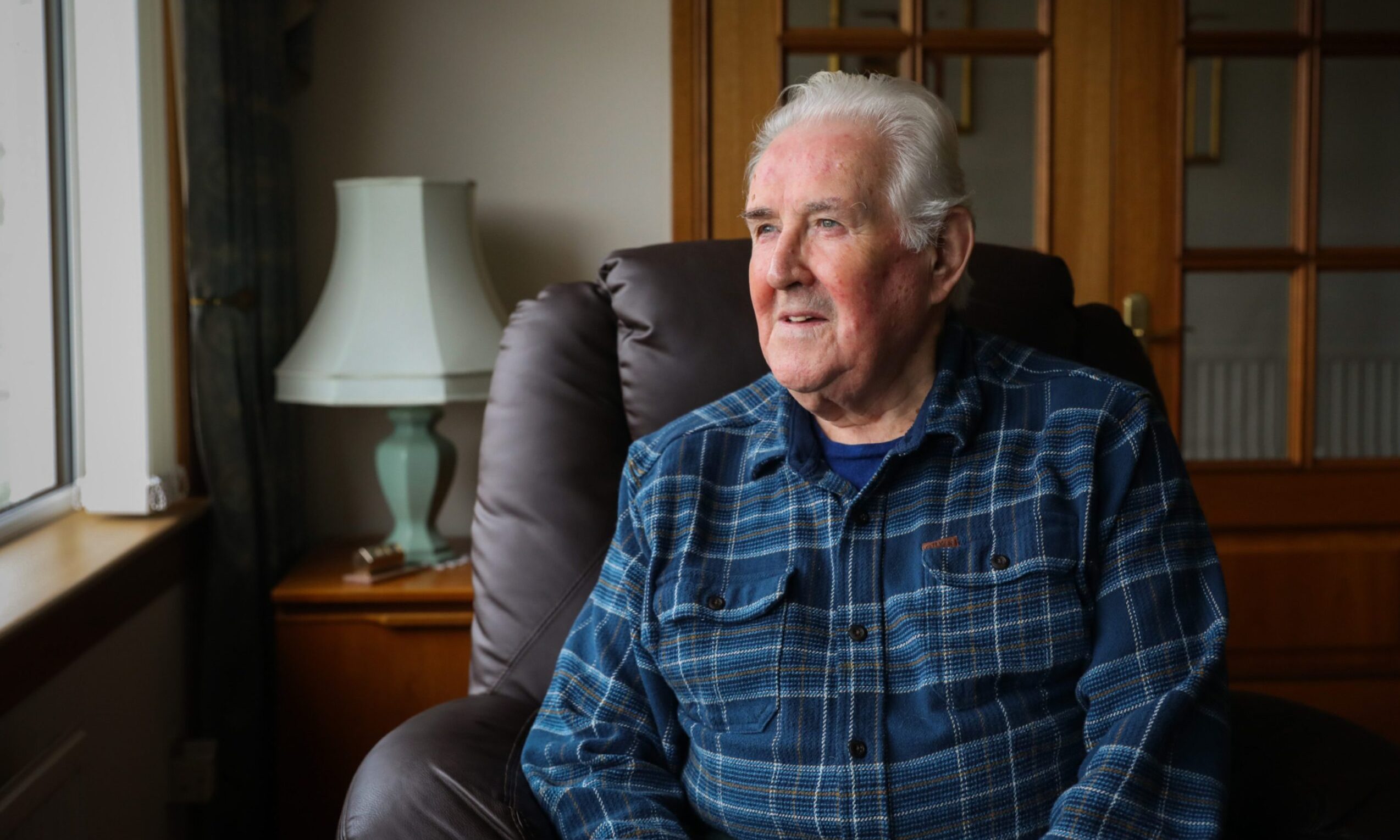
John Stewart has never forgotten the sights and sounds of growing up in Perthshire during the Second World War.
John was raised on Essendy Farm in Blairgowrie where his father was farm manager.
Life was generally quiet in the countryside, but the war arrived on his doorstep in dramatic fashion.
John’s peaceful childhood was disturbed twice during the war.
Firstly, in 1941.
Now 86, he still remembers running round the inside of a bomb crater that appeared next to his farmhouse when a German bomber jettisoned two bombs over the farm in Blairgowrie.
It was the night of the Clydebank Bombings in March 1941.
John has vivid memories despite being so young at the time.
He thinks someone could have been showing a light which attracted the attention of the German bombers as they headed from Clydebank to Norway.
“Some of us might have had lights showing or hadn’t been properly blacked out,” he said.
“Of course, that was before we had electricity, so it would be Tilley lamps providing the light.
“I’m not sure but I would have only been three or four at the time.”
He said the craters were about 400 yards apart and about 20 feet deep.
The other bomb dropped outside the farmer’s house.
Thankfully, no-one was injured from the farm, and a young John was able to keep himself entertained by having fun in the craters, which were left by the bombs.
Although he didn’t have many local friends growing up, a young John was quite happy.
“The farm was about 300 acres, so I had a 300-acre playground to play in,” he said.
“We had big farm buildings, animals, horses, pigs, and cattle.
“Oh no, it was terrific.”
Blairgowrie plane crash was devastating
After this, John couldn’t recall any other incidents, until three years later in 1944.
On the morning of February 8, John’s day began like any other, with his walk to Marlee Primary school.
However, by the mid-day break, tragedy had struck the area.
“We came out at the break, and we were told that there had been a plane crash just along the road maybe a mile and a half away,” he said.
Curiosity overtaking the class, they made their way to the site of the crash, which happened on a hillside field at Hillbarns, around a mile outside Blairgowrie.
Although not allowed close to the wreckage, John was still able to see everything that was going on and what he witnessed has never left him after 80 years.
The class gathered along the Rae Loch to try and catch a glimpse of the accident.
“There was still a lot of smoke coming from the plane,” he said.
“I can remember that quite clearly.
“You could smell the burning from where we stood.
“It was unforgettable.”
Pilot died in Second World War Blairgowrie plane crash
John had never seen anything like it but at the time, they didn’t realise there was a fatality.
The details of what happened emerged afterwards.
A Whitley Bomber had crashed during a navigation exercise from RAF Kinloss.
One of the Bomber’s engines had failed at 9,000 feet.
Five members of the crew were able to parachute to safety at 11.30am.
Tragically, however, Sergeant Charles Alexander Irvine, who was the pilot, was unable to make it to out with his colleagues, stayed in the cockpit and went down with the plane.
Charles was a son of John and Sarah Irvine, Barrow-in-Furness.
He was the only fatality in the accident.
He was buried in a Commonwealth War Grave in Barrow-in-Furness cemetery.
John has always remembered the date of the tragedy.
He told how this type of accident was virtually unheard of in his quiet, rural community during the war where it was actually a pretty rare occasion to even hear planes travelling overhead.
John said it took the locals by surprise and left them shocked.
Sweet treat when Second World War ended in 1945
Courier country was struck 123 times during the Second World War.
The deadliest attack happened on August 6 1942 in St Andrews where 11 people were killed and 23 were injured, but Blairgowrie largely escaped being targeted.
Children were generally considered to be safer in the countryside.
Life got back to normal for John.
He said he enjoyed his time at school, which was attended by around 20 pupils.
Reminiscing on his primary school days, John said that it was there that he first tried chocolate, which was a big thing during a time when there was rationing.
The sweet taste first touched his lips after the guns fell silent in 1945.
He said the children of the school were gifted powdered chocolate at the end of the Second World War, which was sent over from Australia.
It remains one of his favourite memories of growing up in wartime.
“This stuff was just out of this world,” he said.
“When I tasted it, my goodness”.
“I’ve loved chocolate ever since.”
Remembering the 80th anniversary of the wartime accident that killed Sergeant Irvine has given John a chance to look back at his childhood memories and photographs.
“Living in Perthshire, certainly in the environment that I was in in the country, was amazing,” he said.
“I wouldn’t swap it for anything, thinking back on it, you know.
“It was absolutely tremendous, and it sets you up with good standards for the rest of your life.”
John eventually became a police officer
After the war, John finished his education and went on to work as an electrician for W.M. Cooper, who had a shop in Blairgowrie.
After this, John was required to undertake two years of National Service.
This came in to force in 1949 and dictated that all physically fit males between the ages of 17 and 21 had to serve in the armed forces, for 18 months.
By the time John had completed his, it was 1960.
He stayed in Blairgowrie for a further two years before he decided to move.
“The winter of 1962 was very bad and the building trade more or less closed down so I decided a change of career was needed,” he explained.
John moved to Fife where he joined Fife Constabulary.
He was a police officer for the next 31 years before retiring in 1993, attaining the rank of Inspector.
John settled in Kirkcaldy and is a father of two boys, with two grandsons.
But the place where he grew up in Perthshire is never far from his thoughts.
And neither is Sgt Irvine.
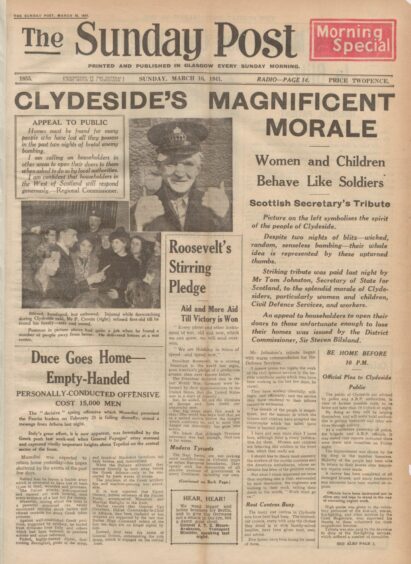
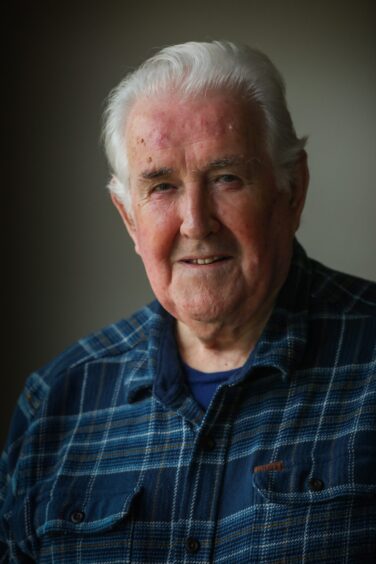

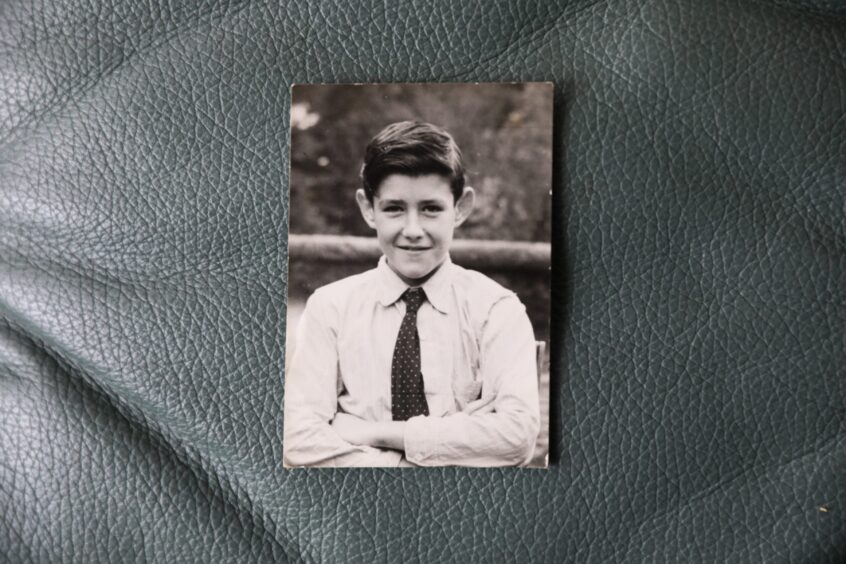
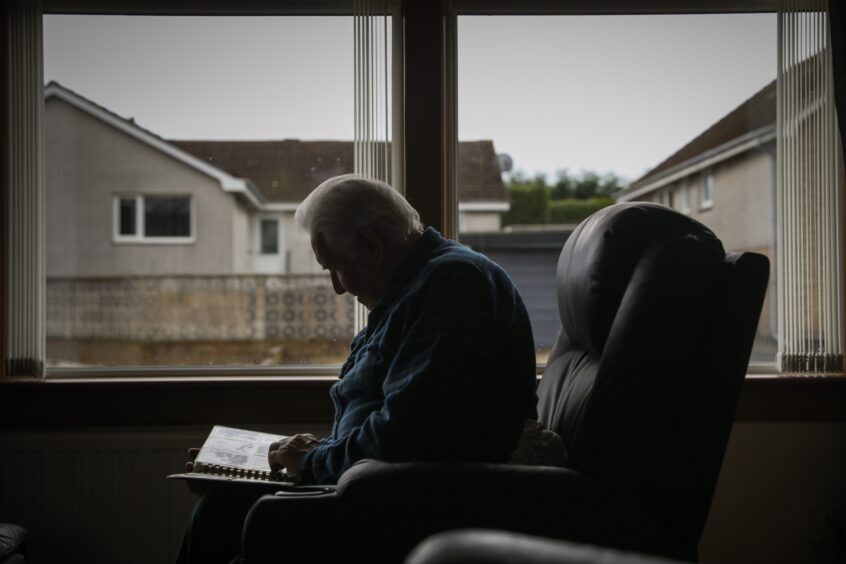










Conversation